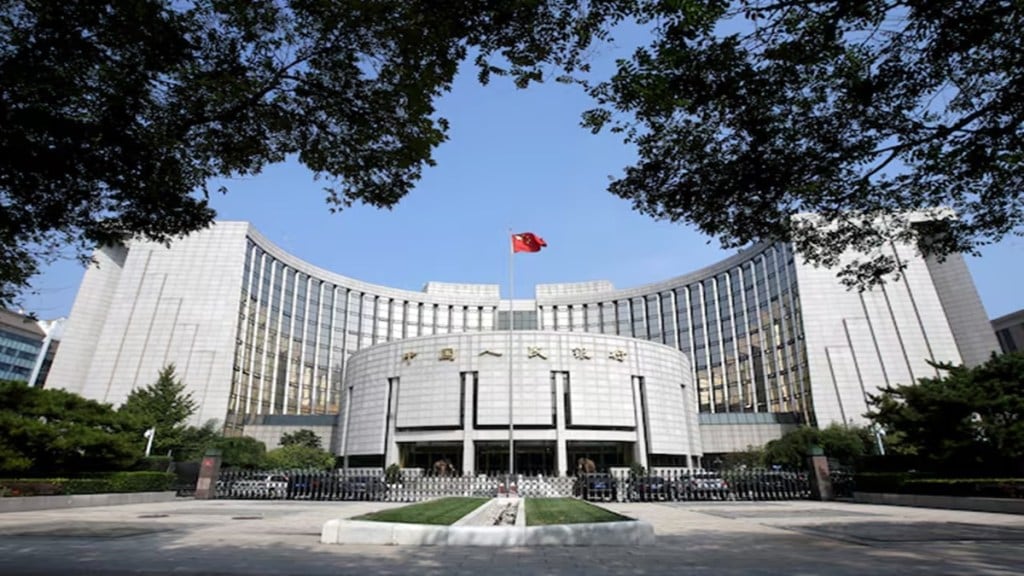By Govind Bhattacharjee
In order to revive its sagging economy and boost its depressed property market, on September 24, China’s central bank, the People’s Bank of China (PBOC), announced a huge monetary stimulus package comprising three components. First, it cut the reserve requirement ratio by 0.5% and the main policy interest rate by 0.2%. Second, it reduced the mortgage rates for existing home loans by almost 0.5% and curtailed the minimum down payment requirement for second homes from 25% to 15%. It also raised the funding support, from 60% to 100%, for commercial bank loans to locally-owned state firms for purchasing excess housing inventory for conversion to affordable housing units. Third, to revive investor sentiment and support the stock market, the PBOC allowed eligible institutional investors to borrow directly from it, using assets like stock exchange-traded funds as collateral, and then sell them to get the cash they need to invest more in equity markets. In addition, the PBOC will provide refinancing loans for banks extending credit to listed companies aiming to buy back their own shares.
Two days later, the Politburo of China’s ruling Communist Party resolved to make countercyclical fiscal policies even more potent by issuing an additional 2 trillion yuan ($280 billion) of bonds, equivalent to 1.5% of China’s GDP, half of it to help arrest the risk of local governments going bust from depressed property values, their major investments, and the rest half to encourage spending by households and firms by handing out a monthly dole. On October 21, the PBOC cut its benchmark lending rates again. The one-year loan prime rate (LPR) was reduced from 3.35% to 3.10%, and the five-year LPR from 3.85% to 3.60%, rates which are now at their historic lowest. The combined size of all these tools was 800 billion yuan ($112 billion), though it pales in comparison with the 4 trillion-yuan ($586 billion) package that China gave in 2008, which helped revive both China’s and the global economy.
The effects of these changes have been devastating for the Indian stock market. It triggered immediate capital outflow from India by foreign portfolio investors (FPIs), plunging the stock market into a free fall. The Sensex nosedived from a peak of 85,800 on September 26 to 80,221 on October 22, losing all the gains made during the past three months. As the “sell India, buy China” strategy took firm hold, FPIs sold shares worth Rs 82,000 crore during this period, according to National Securities Depository Ltd data. Of course, there were other factors which also played on the minds of investors, like the worsening geopolitical situation, especially in West Asia, the uncertainty of the US elections, and the depressing Q2 results of India Inc, but the Chinese stimulus package remained the major cause of the upheavals seen in the market. As Indian stocks nosedived, Chinese stocks rallied sharply by 15% in the week following the September 24 stimulus, outperforming global markets. Sharp gains recorded hitherto in the Indian stock market had shot up the valuation of its shares. After China announced the stimulus package, many investors have moved to China to encash the cost advantages quickly. The stimulus has unleashed the biggest weekly stock market rally in more than 15 years in China, with major indices soaring above 25%. Due to the high volume of trading, the Shanghai stock exchange suffered several glitches.
But it may not be time to celebrate the Chinese stimulus as yet, and the effects may be temporary. Data released on September 27 showed industrial profits tumbling by almost 17%, year-on-year (y-o-y), and a survey of purchasing managers suggested continued contraction of manufacturing activity. It does not address China’s deep-rooted structural issues such as its property woes, which are far from being fixed. October data showed that the value of new home sales among the 100 largest developers fell by 38% in September, y-o-y, from 27% in August, indicating that housing is no longer a preferred asset. It may need government guarantee and funds to local governments or state-owned firms to buy the huge numbers of unsold, finished, and unfinished flats. Some economists think the stimulus is too small and would need 7-10 trillion yuans to combat the deflationary doldrums that are unsettling the economy, which the government cannot afford due to its 90% debt-to-GDP ratio. The easing of credit also will have limited impact due to low demand for credit arising from sluggish manufacturing activity. Returning to the path of market liberalisation without fixing the basic structural issues may even lead to a bubble in the stock market.
As for India, despite the current selling by FPIs, the country’s high growth, robust economic fundamentals, and long-term economic stability will continue to attract the interest of global investors, and the recent volatility in its stock market will likely remain temporary only before the momentum picks up again.
The writer is professor of practice, Arun Jaitley National Institute of Financial Management.
Disclaimer: Views expressed are personal and do not reflect the official position or policy of FinancialExpress.com. Reproducing this content without permission is prohibited.
\

